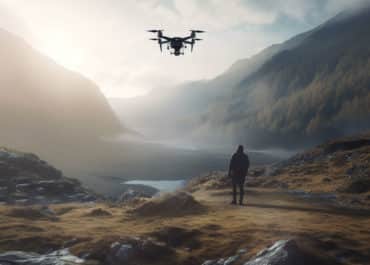Introduction
In recent years, the combination of artificial intelligence (AI) and drones has revolutionized various industries. From aerial photography and videography to agriculture, delivery services, and disaster management, the integration of AI into drones has opened up new possibilities and transformed traditional practices. In this article, we will explore the symbiotic relationship between AI and drones, their applications in different sectors, and the potential advantages and challenges associated with this technology.
The Role of AI in Drones
Enhancing Autonomy and Decision-Making
AI plays a crucial role in enabling drones to operate autonomously and make intelligent decisions in real-time. With advanced algorithms and machine learning capabilities, drones can analyze data collected from sensors and cameras, interpret the environment, and adapt their flight path and actions accordingly. This level of autonomy allows drones to navigate complex environments, avoid obstacles, and perform tasks efficiently.
Intelligent Object Detection and Tracking
One of the key applications of AI in drones is object detection and tracking. By leveraging computer vision algorithms, drones equipped with cameras can identify and track objects of interest, such as vehicles, people, or animals. This capability has proven invaluable in various industries, including search and rescue operations, wildlife monitoring, and security surveillance.
Data Analysis and Insights
AI-powered drones can collect vast amounts of data during their flights. From aerial imagery and video footage to environmental and sensor data, drones provide a wealth of information that can be analyzed and processed using AI algorithms. This data analysis can reveal valuable insights for industries such as agriculture, infrastructure inspection, and urban planning.
Automated Mission Planning and Optimization
AI enables drones to optimize their flight paths and missions based on predefined objectives and constraints. By considering factors such as weather conditions, battery life, and task requirements, AI algorithms can generate efficient flight plans that maximize productivity and minimize risks. This automation simplifies mission planning and execution, allowing operators to focus on higher-level decision-making.
